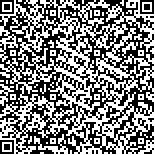| 摘要: |
| 目的 土地利用与覆盖变化是监测区域变化的重要方法,而发生剧烈变化的热点区域更是研究的重要部分,有效识别热点区并分析其影响因素可以为保护土地生态环境、有效利用土地资源提供科学支撑。方法 文章利用欧洲航天局(ESA)气候变化倡议的长期时间序列土地覆盖数据集(CCI-LC)对“一带一路”典型区土地利用与覆盖变化进行分析,根据变化面积、相对变化速率及其聚集程度建立了热点区域的识别方法,并分析了影响因素。结果 (1)根据土地覆盖变化结果表明,1992—2020年“一带一路”典型区内总共有5.46%的面积发生了变化,建设用地净增加面积最多,为24.61万km2,相对变化速率在2000—2010年最高,为76.94%。(2)热点识别结果表明,2000—2010年土地覆盖变化最剧烈,不同时期的热点区域内主要的转型特征不同,1992—2000年主要表现为耕地的增加,2000—2010年主要表现为林地和建设用地面积扩张,2010—2020年主要表现为建设用地面积增多和林地的砍伐与恢复。(3)热点区域集中分布在0~200m的海拔范围内,热点区域内的像元数量随海拔升高不断减少。(4)热带多雨气候区域内热点占比最大,而其他气候类型对热点区域内的像元数量的影响较小。(5)社会经济因素对于热点区域内的像元数量有着显著的影响,其中城市人口数量和国内生产总值最重要,两者结合可以解释全部热点的86.46%。结论 研究探明的热点区域和影响因素可以为“一带一路”典型区土地利用格局演变、区域土地利用规划和土地资源可持续利用提供决策支持。 |
| 关键词: 土地利用与覆盖变化 热点识别 地理探测器 “一带一路” |
| DOI:10.7621/cjarrp.1005-9121.20220506 |
| 分类号:P283.8 |
| 基金项目:第二次青藏高原综合科学考察研究资助(STEP) (2019QZKK0603);中国科学院A类战略性先导科技专项(XDA20040201);中国科学院青年创新促进会 (2021052) |
|
| HOTSPOTS IDENTIFICATION AND INFLUENCING FACTORS OF LAND USE CHANGE IN THE TYPICAL REGION OF THE BELT AND ROAD INITIATIVE |
|
Jin Qi1, Xu Erqi2,3, Zhang Hongqi2,3, Zhang Xuqing1
|
|
1.College of Geo-Exploration Science and Technology, Jilin University, Changchun 130061, Jilin, China;2.Institute of Geographical Sciences and Natural Resources Research, Chinese Academy of Sciences, Beijing 100101, China;3.Key Laboratory of Land Surface Pattern and Simulation, Beijing 100101, China
|
| Abstract: |
| Land use and cover change is an important method to monitor regional change, and hotspots with drastic changes are an important part of the study. Effective identification of hotspots and analysis of their influencing factors can provide scientific support for the protection of land ecological environment and effective utilization of land resources. This study, the Long-term Time Series Land Cover Dataset of the European Space Agency climate Change Initiative was used to analyse land use and land cover change in the typical region of the Belt and Road Initiative. Based on the change area, the relative change rate and the aggregation index, the identification method of hotspots was established, and the influencing factors were analysed. According to the land cover change results, 5.46% of the typical the Belt and Road Initiative area had changed from 1992 to 2020, and the net increase area of construction land was the largest (246 100 km2), and the relative change rate was the highest (76.94%) from 2000 to 2010. Hotspot identification results showed that the land cover change was the most drastic from 2000 to 2010, and the main transformation characteristics of hotspot areas in different periods were different. The main transformation characteristics of hotspot areas were the increase of cultivated land from1992 to 2000, the expansion of forest land and construction land during 2000-2010, and the increase of construction land during 2010-2020. The number of pixels in the hotspot area decreased with the increase of the altitude, and the hotspot accounted for the largest proportion in the tropical rainy climate area, while other climate types had little influence on the number of pixels in the hotspot area social and economic factors had a significant impact on the number of pixels in hotspots, among which the number of urban population and GDP were the most important. The combination of the two could explain 86.46% of all hotspots. Therefore, the hotspots and influencing factors analyse in this paper can provide decision support for land use planning and sustainable use of land resources in the evolution of land use pattern in the study area. |
| Key words: land use and cover change hotspots identification Geodetector the Belt and Road Initiative |

